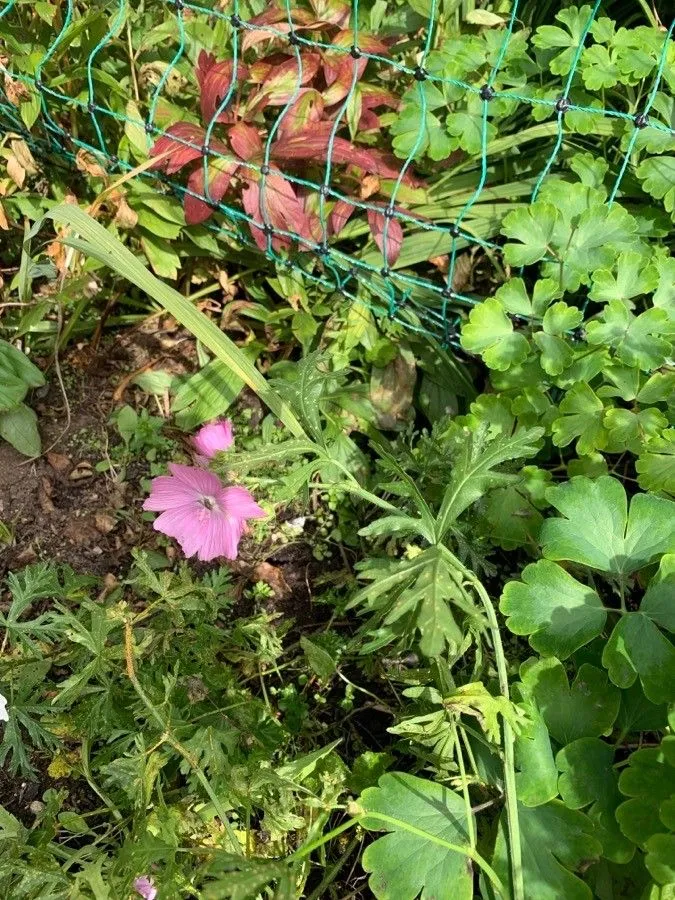
Author: L.
Bibliography: Sp. Pl.: 689 (1753)
Year: 1753
Status: accepted
Rank: species
Genus: Malva
Vegetable: False
Observations: S. Sweden to S. & E. Europe and N. Türkiye
Greater musk mallow, scientifically known as Malva alcea, is a charming perennial plant that belongs to the Malvaceae family. Described by the renowned botanist Carl Linnaeus in his seminal work “Species Plantarum” in 1753, this species has captivated botanists and garden enthusiasts alike for centuries.
Native to a broad swath of Europe, the Greater musk mallow thrives from southern Sweden to southern and eastern Europe, extending its reach to northern Türkiye. This geographical range reveals the plant’s adaptability to various climates and soil types, making it a versatile and resilient species.
The plant is noted for its striking flowers which bloom in shades of pink or occasionally white. Each blossom measures around 4 to 5 centimeters in diameter and features five delicate, overlapping petals. These petals are adorned with rich, purplish veins that add an intricate pattern to the already beautiful blooms. The flowering period usually spans from late spring to early autumn, during which time the Greater musk mallow adds a splash of color to meadows, riverbanks, and gardens.
In terms of growth habit, Malva alcea typically reaches heights of 60 to 120 centimeters. Its stems are erect and slightly branched, bearing deeply lobed leaves that provide an additional texture to its visual appeal. The foliage is a harmonious green, offering a perfect backdrop to its vibrant flowers.
Ecologically, the Greater musk mallow plays an essential role in its native habitats. It attracts a variety of pollinators, including bees and butterflies, which rely on its nectar. This not only aids in the plant’s reproduction but also supports the broader ecosystem by promoting biodiversity.
Aside from its ecological significance, Malva alcea has been utilized in traditional medicine for its soothing properties. Historically, parts of the plant have been used to alleviate certain ailments such as coughs and skin irritations, showcasing its value beyond mere aesthetics.
In the garden, Greater musk mallow is appreciated for its ease of cultivation and minimal maintenance requirements. It prefers well-drained soil and can tolerate partial shade, although it flourishes best in full sun. Gardeners often plant it in borders, cottage gardens, or wildflower meadows to take advantage of its attractive and persistent blooming.
In conclusion, the Greater musk mallow (Malva alcea) is a noteworthy plant that bridges aesthetic beauty with ecological and historical significance. Its capacity to thrive across varied landscapes, coupled with its lovely flowers and beneficial properties, cements its place as a cherished member of the Malvaceae family.
Lit: aukštoji dedešva
Eng: cut-leaf mallow, european mallow, greater musk mallow, greater musk-mallow, hollyhock, vervain mallow, cut-leaved mallow, hollyhock mallow, vervain cheeseweed
Deu: rosen-malve, sigmarskraut, sigmarswurz, spitzblaettrige malve
Dan: rosen-katost
Fra: mauve alcée
Est: roos-kassinaeris
Nob: rosekattost
Nno: rosekattost
Swe: rosenmalva, ruusumalva
Lav: rožu malva
Fin: ruusumalva
Nld: vijfdelig kaasjeskruid
Cym: hocysen-fwsg fawr
En: Greater musk mallow, Cut-leaf mallow, Vervain mallow, Cut-Leaved Mallow, European mallow, Greater Musk-mallow, Hollyhock, Hollyhock mallow, Vervain cheeseweed, Pink Mallow
Ar: خبازة خطمية
Be: Мальва выразаная
Cs: Sléz velkokvětý
Da: Rosen-katost
Nl: Vijfdelig kaasjeskruid
Et: Roos-kassinaeris
Fi: Ruusumalva
Fr: Mauve alcée
De: Rosen-Malve, Sigmarskraut, Spitzblatt-Malve, Sigmarswurz, Spitzblaettrige Malve
It: Malva alcea
Lv: Rožu malva
Lt: Aukštoji dedešva
Nb: Rosekattost
Nn: Rosekattost
Pl: Ślaz zygmarek
Pt-br: Malva-européia
Qu: Hatun rup’u
Sk: Slez liečivý
Es: Malvavisco silvestre
Sv: Rosenmalva, Ruusumalva
Cy: Hocysen-fwsg fawr
Taken Sep 23, 2020 by David Hocken (cc-by-sa)
Taken Sep 15, 2021 by Jacques Zuber (cc-by-sa)
Taken Jun 17, 2022 by Fabrice Rubio (cc-by-sa)
Taken Sep 23, 2020 by Frozy
Taken Nov 25, 2021 by Jule Lub (cc-by-sa)
Taken Sep 11, 2019 by Bonk Agata (cc-by-sa)
Taken Sep 23, 2020 by Frozy
Taken Sep 8, 2021 by Kai Best (cc-by-sa)
Taken Sep 30, 2019 by Daniel Bourget (cc-by-sa)
Taken Oct 26, 2017 by leo h. (cc-by-sa)
Taken Aug 28, 2019 by Emmanuelle Chat (cc-by-sa)
Taken Jul 9, 2022 by Kai Best (cc-by-sa)
Taken Sep 13, 2021 by Martine CHOCHOI (cc-by-sa)
Taken Aug 29, 2019 by Marek (cc-by-sa)
Taken Sep 23, 2020 by Frozy
Taken Jul 7, 2020 by Isabelle Bellin (cc-by-sa)
Taken Sep 19, 2021 by treasure.forest ig (cc-by-sa)
Taken Sep 2, 2019 by charlotte lambert (cc-by-sa)
Taken Sep 23, 2020 by Frozy
Taken Oct 26, 2017 by leo h. (cc-by-sa)
Taken Oct 27, 2022 by mrostf (cc-by-sa)
Taken Feb 10, 2022 by Else Nolden (cc-by-sa)
Taken Aug 24, 2020 by Joseph Moulaison (cc-by-sa)
Taken Jun 18, 2020 by Romina Casto (cc-by-sa)
Taken Jun 6, 2020 by Madlen Juliane (cc-by-sa)
Taken Jun 13, 2014 by Tela Botanica − Dominique REMAUD (cc-by-sa)
Taken Aug 22, 2021 by Éliandre Fleurdepom (cc-by-sa)
Taken Oct 20, 2019 by Stéphanie Couvreur (cc-by-sa)
Taken Aug 13, 2022 by Jim Knopf (cc-by-sa)
Taken Jul 3, 2021 by Vince Vinet (cc-by-sa)
© copyright of the Board of Trustees of the Royal Botanic Gardens, Kew.
© copyright of the Board of Trustees of the Royal Botanic Gardens, Kew.
© copyright of the Board of Trustees of the Royal Botanic Gardens, Kew.
Growth habit: Forb/herb
Ph maximum: 8.0
Ph minimum: 7.5
Light: 8
Atmospheric humidity: 5
Soil nutriments: 7
Family: Myrtaceae Author: (F.Muell.) K.D.Hill & L.A.S.Johnson Bibliography: Telopea 6: 402 (1995) Year: 1995 Status:…
Family: Rubiaceae Author: Pierre ex A.Froehner Bibliography: Notizbl. Bot. Gart. Berlin-Dahlem 1: 237 (1897) Year:…
Family: Sapindaceae Author: Koidz. Bibliography: J. Coll. Sci. Imp. Univ. Tokyo 32(1): 38 (1911) Year:…
Family: Asteraceae Author: A.Gray Bibliography: Pacif. Railr. Rep.: 107 (1857) Year: 1857 Status: accepted Rank:…
Family: Fabaceae Author: Medik. Bibliography: Vorles. Churpfälz. Phys.-Ökon. Ges. 2: 398 (1787) Year: 1787 Status:…
Family: Aspleniaceae Author: (Cav.) Alston Bibliography: Bull. Misc. Inform. Kew 1932: 309 (1932) Year: 1932…